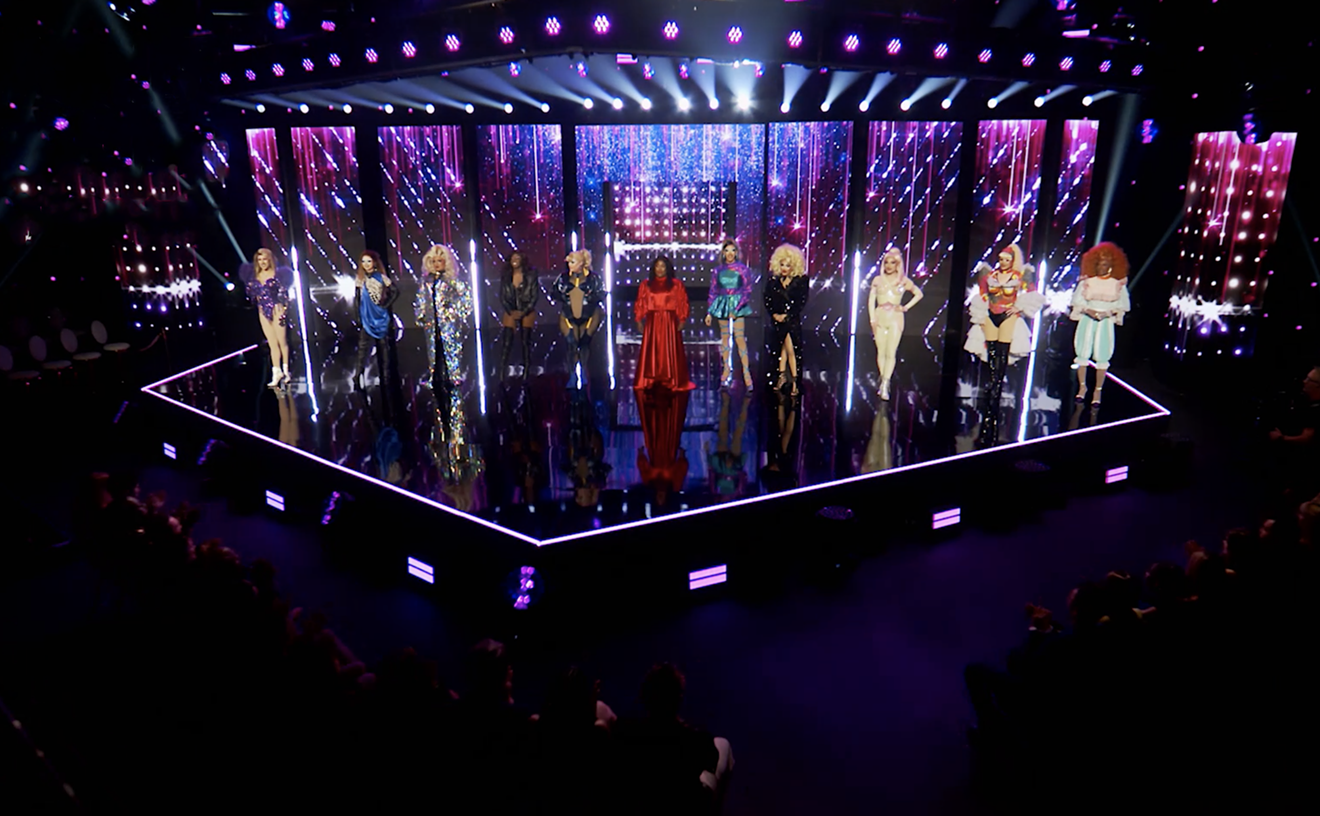But first, down in the Gables, Fred Snitzer Gallery opened with Lynne Golob Gelfman's "Across: New Paintings" (through November 30). Gelfman's works are colored, abstractly patterned, and delicate. Full-size canvases in green and blue, reddish and gray, charcoal and indigo, pink or sepia tones, but what do they say? Gelfman's hand executes thin lines across each piece's painted medium, eliciting a sort of rhythm shifting from left to right, top to bottom, or working a quadrille grid, as if these outlines would come in contact with two-dimensional colored regions where simplicity rules.
I think Gelfman's smaller canvases are better realized. My favorite was Almost Mamey 2, a rectangular canvas with soft touches of green and reddish pink. I miss Gelfman's earlier, more arduous style, but she is moving on and taking new risks, and that's admirable.
Did you know about the Miami Generation? The label stuck after a pioneering Miami-generated exhibit put them on the map during the early 1980s, this group of idealistic young artists assimilating to a new country. It's not easy to negotiate what it means to be a Cuban-American artist within mainstream America, but one who did was the late Fernando Garcia, a member of this group given a retrospective called "Fernando Garcia: On the Line" (through December 15) at the Miami-Dade Public Library's main building.
On opening night, against the backdrop of Garcia's abstract works, a panel addressed questions surrounding art, ethnicity, the art market, and exile politics. They included Humberto Calzada, Cesar Trasobares, Mario Bencomo, Maria Brito, and Fred Snitzer (the first four all members of the Miami Generation); Helen Kohen served as moderator. One of their conclusions: that an artist is -- beyond ethnic or political boundaries -- always an "other," or outsider.
Now over to Wynwood. The opening of "Front and Center" (through January 16), an all-performance exhibit at the freshly opened BOX, was truly an event. A group collaboration showcasing a bunch of performance artists, this was a sort of 1960s happening that mixed the audience's reactions and performers' deliverance simultaneously. There was no pretense to do anything but that, and man, it was dynamic!
Next to the door, Jiae Hwang and Carla D'Allessio lay on a bed, exhausted-looking, enjoying the whole beauty treatment, their faces coated in a greenish paste and eyes covered with cucumber slices. They never moved, not even when the thunderous musique concrète of René Barge (playing a shirtless cowboy) bombarded everyone with a cadence of noise explosions followed by soft hiss echoes. His performance -- along with a beach boy impersonator who sat next to the blasting amp on a folding chair -- was superb.
Meanwhile, walking here and there, loudly compelling people to eat her conceptual meal, was Roxana Carolina Cocina (her last name means kitchen). Cocina's white and black beans or her popcorn with chicharrónes (pork rind chips) are a first in bilingual foods.
The trio of FeCuOp exhibited a heart-shaped pink kissing booth for any in the audience wanting to become a performer. Jenna Balfe mixed with the crowd playing an American tourist in Miami. As I left, David Rohn greeted me, of course within character, as a nineteenth-century French landscape artist painting à la prima. Outside, a retro-looking limo picked up Barge and his companion.
Over at Locust Projects is Nathan Carter's "Delta Echo Triple One Upper" (through December 22). Carter has created a whimsical group of ships fixed to the wall; he cuts long wavy strips of plywood and then paints and covers them with all sorts of patterns. There is something particularly amusing about these red, green, and blue vessels, animated with big eyes and long, thin masts, rotors, antennas, maps, quasi-boards, flags, and whatnot; an avante-pop foresight out of Baron Munchausen's travel books.
Finally, what to do when a gallery closes its front door in the middle of opening night? We wanted to see the latest show at OBJEX Artspace, but after ringing the bell (painted in the same color as the wall) for more than five minutes, we quit. I don't really blame them -- we could hear people having fun with the music upstairs -- but they could make accessibility a little more user-friendly.










